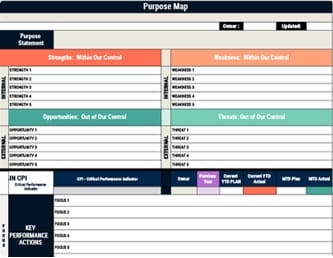You can use scoreboard software to turn KPIs into shared, real-time targets that everyone understands, aligning teams on what matters now and why it matters next. It pulls data from your existing systems, visualizes performance with simple cues, and flags issues early so you act before they escalate. As you standardize metrics, cadence, and accountability, you’ll see where work stalls, where it accelerates, and how small adjustments compound—setting up the vital choices that come next.
Key Takeaways
- Scoreboard software turns business KPIs into visible, shared goals with real-time dashboards, driving alignment and quick course corrections.
- It centralizes metrics tied to strategy, clarifying priorities and fostering accountability across teams and departments.
- Key features include customizable dashboards, seamless integrations, intuitive UI, and robust scheduled and ad hoc reporting.
- Use cases span marketing, management, entertainment, customer operations, and general operations to track performance and surface bottlenecks.
- Successful rollout requires defined KPIs, secure real-time integrations, shared KPI taxonomy, staff training, and impact measurement via adoption and ROI.
From Game Day to the Boardroom: What Scoreboard Software Does
Although it started on the sidelines of sports, scoreboard software now gives your business a clear, real-time view of performance by turning key metrics into visible, shared goals.
Scoreboard software transforms key metrics into shared, real-time goals for clear business performance visibility.
You deploy a digital scoreboard to surface KPIs across teams, so people see targets, trends, and gaps as they happen, which reduces confusion and keeps priorities front and center. You track employee progress openly, encouraging accountability and quick course corrections, while dynamic animations and customizable templates keep updates engaging without distracting from the data.
You also monitor marketing effectiveness by displaying ad impressions, click-throughs, and conversions beside sales or service metrics, creating a unified picture of impact.
Behind the scenes, you generate detailed reports that explain why performance shifted, and you share these insights to guide innovative solutions and cross-team collaboration.
Key Benefits for Enterprise Performance Management
Building on how scoreboards make performance visible across teams, the enterprise benefit is a disciplined, real-time operating rhythm where KPIs are tracked continuously, accountability is shared, and decisions move faster because everyone sees the same facts.
You centralize performance metrics, connect them to business strategy, and use real-time tracking to clarify priorities, which reduces confusion and stress while boosting productivity.
With transparent dashboards, you strengthen employee engagement, since teams see how their work affects outcomes and collaborate to remove bottlenecks.
You spot issues and winning plays quickly, then adjust plans before small problems grow.
By monitoring customer satisfaction and retention alongside operational effectiveness, you validate what’s working for stakeholders and investors.
Ultimately, you create a culture of measurable execution, faster learning, and consistent improvement.
Must‑Have Features for Real‑Time KPI Visibility
When you evaluate scoreboard software for real-time KPI visibility, prioritize features that turn raw data into clear, actionable insight so decisions happen quickly and confidently.
You need tools that surface sales, satisfaction, and efficiency metrics without delay, then present them in formats your team can grasp at a glance.
- Customizable dashboards: Configure views by role and objective, filter to critical KPIs, and highlight thresholds, so KPI visibility remains focused and relevant.
- Integration with existing business systems: Connect CRM, ERP, and data warehouses for seamless data flow and live updates that protect accuracy.
- User-friendly interfaces: Guarantee intuitive navigation, clear labeling, and accessible visuals, allowing technical and non-technical users to self-serve.
- Extensive reporting tools: Produce scheduled and ad hoc reports, drill into trends and anomalies, and export insights for planning, forecasting, and accountability.
Use Cases Across Departments and Industries
Across departments and industries, scoreboard software translates diverse workflows into a common language of real-time performance, so you can spot progress, pinpoint issues, and course-correct quickly.
Scoreboards turn varied workflows into shared, real-time insight—spot progress, surface issues, and course-correct fast.
In marketing, use performance tracking to monitor campaign reach, conversion rate, and cost per acquisition, then compare against sales pipeline movement for aligned decision-making.
For management, track employee contributions, task throughput, and deadline adherence to strengthen accountability and highlight coaching needs.
In entertainment, evaluate performers on collaboration, timing, and technique, using real-time insights to tune rehearsals and improve show quality.
For customer operations, monitor customer satisfaction, retention, and journey milestones to target service gaps and reduce churn.
In general business operations, visualize bottlenecks, validate winning processes, and prioritize fixes, ensuring goals stay measurable and achievable.
Integrations and Data Sources That Make Dashboards Actionable
Sometimes the difference between a pretty dashboard and an actionable one is the quality and breadth of your integrations, so start by wiring your scoreboard software directly to core systems like your CRM, ERP, marketing automation, support desk, and finance tools through native connectors or secure APIs.
You’ll unify data sources, reduce manual entry, and surface real-time performance metrics that guide daily decisions. Pair those feeds with built-in analytics and clear visualizations so trends, anomalies, and KPIs stand out.
- Connect CRMs and ERPs to stream pipeline, revenue, inventory, and fulfillment data into dashboards.
- Use API integrations to merge marketing, finance, and support data for cross-functional analytics.
- Add social and engagement tools to monitor brand health and audience response.
- Apply customizable templates and reports to align metrics with business goals.
Steps to Implement Scoreboard Software at Scale
Before you roll out scoreboard software company-wide, define the KPIs that map directly to your strategic goals. Then choose a platform that supports real-time updates, multi-user access, and secure integrations with your CRM, ERP, finance, marketing, and support systems so data refreshes without manual work.
Build a simple, shared KPI taxonomy so every team reads performance metrics the same way, and document ownership for each metric. Configure role-based views that highlight what matters for day-to-day operations, then pilot with a cross-functional group to validate data accuracy and usability.
Train staff with short workshops, hands-on exercises, and quick reference guides. Set a recurring review rhythm, facilitate data-driven decisions in meetings, and establish feedback loops to refine visualizations, alerts, and workflows continuously.
Measuring Impact: Adoption, Engagement, and ROI Metrics
When you measure the impact of scoreboard software, start by defining a concise set of adoption, engagement, and ROI metrics that tie directly to business goals. Then instrument your platform and connected systems to capture them consistently.
Track login frequency, dashboard views, and time-on-page to confirm adoption. Then assess employee engagement through participation in updates, comments, and goal progress. Connect performance metrics to outcomes that matter, such as cycle time, defect rate, and win rate, ensuring accountability and operational effectiveness are visible and actionable.
- Adoption: active users, weekly returning users, and feature utilization.
- Engagement: contribution rate, update cadence, and cross-team mentions.
- Outcomes: issue detection time, throughput, and customer satisfaction.
- ROI: time saved, reduced rework, revenue lift, and funding success.
Review trends weekly, drive strategy adaptation, and iterate.
Frequently Asked Questions
What Is an Electronic Scoreboard?
An electronic scoreboard is a digital display that shows real-time information, such as scores, timers, and key metrics, using data feeds or manual inputs.
You use it to present clear, current status updates to viewers, align teams around goals, and track progress visibly.
You can customize layouts, colors, and branding, integrate with software for live updates, and configure alerts, so you maintain accuracy, improve accountability, and quickly highlight achievements or areas needing attention.
What Is the History of Nevco?
Nevco’s history begins in 1934 as a sports scoreboard manufacturer, and you’ll see its breakthrough in the 1970s with one of the first electronic scoreboards, which catalyzed modern digital displays.
You then watch it expand into digital signage and software that manage dynamic, event-driven content.
As you evaluate its growth, note its strong customer support, training, and resources, and recognize how it now serves sports, entertainment, and business, demonstrating adaptable technology beyond traditional scoring.
Conclusion
You’re ready to move from static reports to living scoreboards that track KPIs in real time, align teams, and surface problems before they escalate, yet one decision remains. Will you standardize data sources, define ownership, and pilot high‑impact dashboards, or keep guessing in weekly meetings? Set governance, train champions, and integrate alerts, and you’ll turn metrics into action. Start small, measure adoption and ROI, then scale—because once your first scoreboard goes live, you’ll wonder how you managed without it.


